Rabbit Genetics
The Basics are Simple to Understand
Rabbit Genetics: Dominant and recessive trait inheritance principles apply equally to rabbit coat color genetics and other genetic traits.
Here are the basics about how dominant/recessive inheritance in rabbits works relative to rabbit coat color genetics.
Inside every cell in the rabbit is DNA. DNA is the blueprint that dictates how the animal looks, acts and functions.
Genes contain the DNA. Genes come in pairs, because a rabbit inherits one copy from EACH parent, making a total of two copies per rabbit.
The genes always contain two copies for fur color. The two copies might be identical, coding for the same color, or, they might NOT be identical. They might each code for a different color of fur. If so, one color will be dominant, and the other is simply a back-up, or recessive (see below).
One of these genes comes from the father
and one from the mother. They
recombine in the offspring, bringing the total gene count back up to two per trait per animal. This recombination of genetic
material from parents into children is why we have such diversity among both
people and rabbits.
Some genes are dominant, and some are
recessive. The dominant gene gets "expressed," that is, you
see its effect in the color of the rabbit.
The other gene is is not expressed.
In fact, you might never know it's there, unless it gets passed down to
an offspring and paired with another recessive.
For example:
Agouti coloration is
dominant. Think chestnut
agouti in Netherland Dwarfs or castor in Rex rabbits. Both are agouti. It only takes 1 agouti gene to produce an Agouti rabbit because the gene is dominant.
Solid "self" coloration is
recessive. ('Self' color means solid all over, from ears to abdomen to tail.) For example, to have a solid black coat, the
rabbit must have received two recessive self-coloration genes, one from both parents. There is no way for a black rabbit to have an agouti gene, because if it did, it would BE agouti.
Are we good so far?
Rabbit Reproduction, 2nd Edition
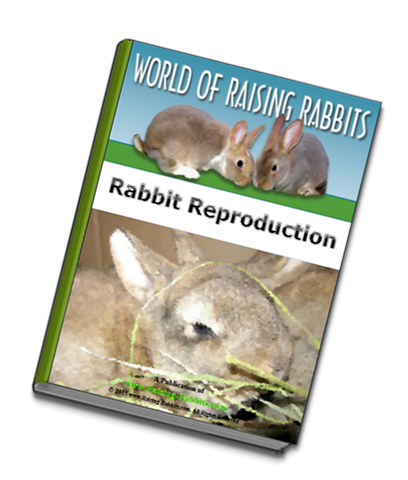
As easily as rabbits seem to multiply, a surprising number of glitches can arise and cause uncertainty and anxiety in the rabbit owner.
Rabbit Reproduction is an e-book entirely focused on reproducing rabbits, from mating and kindling, to the entire season of a young kit's life from conception to teenage-hood, now in an enhanced second edition.
Not just a ‘how-to’ manual: It fully answers a plethora of all the what-if questions that eventually arise: what if the doe doesn’t cooperate, are all first-time does stupid, should I test-breed, when can I check the kits, are the babies getting enough milk, what if I don’t have a nest box, how can I tell the boys from the girls, and so much more.
-- Click here for much more info about Rabbit Reproduction.
-- Follow this link to purchase Rabbit Reproduction E-Book!
Your purchase is 100% Risk Free. See our Double-Value Guarantee below.
Example of Rabbit Genetics: Fur Coloration
Let's see how rabbit genetics work when two rabbits mate that each have both a dominant and a recessive gene. We'll use the above example of agouti as the dominant gene, coding for patterned hair shafts, and a self or solid-coloration recessive gene, meaning no patterns at all on the hair shafts.
In this case, what bunny colors could you expect to find in the nest box?
This chart will help us visualize the rabbit genetics.
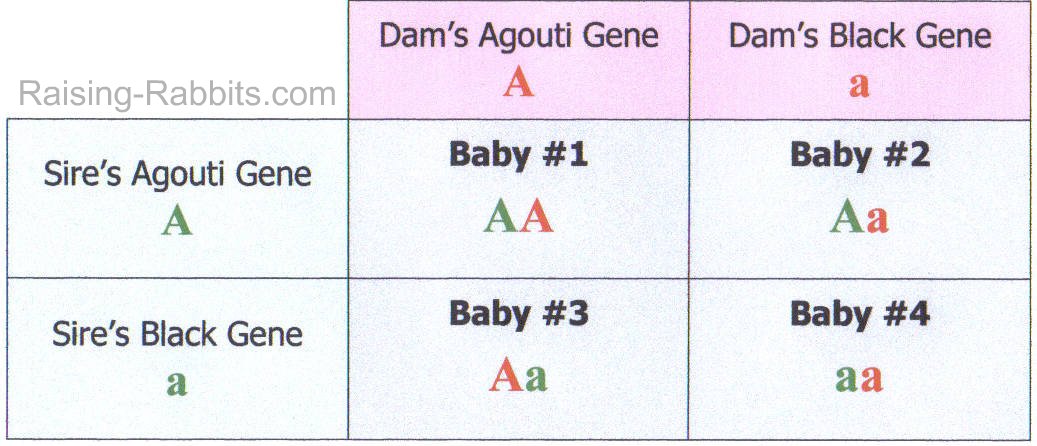
The CAPITAL 'A' represents the dominant chestnut agouti
gene.
The small 'a' represents the recessive solid-coloration gene.
In our example, the sire (father) has a DOMINANT agouti gene and a recessive black gene. He will give just one of these genes, randomly, to each offspring. The same is true for the dam (mother). Our chart, for simplicity, has room for 4 offspring, which is fine. In the long run, this will accurately represent the statistical chances for obtaining these colors.
We'll place a big red A from the dam into the boxes under her big A, and we'll place a little red 'a' from the dam into the boxes under the dam's little 'a.' We'll then do the same for the sire, following the rows, and we'll color the sire's genes green for clarity.
50% of the babies get a dominant 'A' gene from dad, and 50% get a recessive 'a' gene.
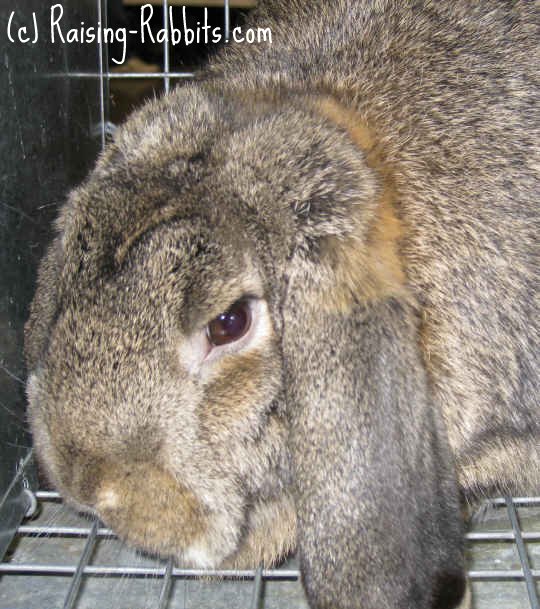 Chestnut Agouti-colored French Lop
Chestnut Agouti-colored French Lop50% of the babies get a dominant 'A' gene from mom, and 50% get a recessive 'a' gene.
So...! What color are
the babies??
Baby #1 has a double dose of chestnut agouti. And he looks like it--definitely chestnut agouti.
Babies #2 and #3 are also agouti, but they also carry a hidden black gene. How can you know this? You can't, not just by looking (you can test-breed), because they are chestnut agouti like their sibling, baby #1.
Baby #4, on the other hand, inherited two self-color genes, and is solid black, top to bottom. There is no dominant gene to cover up the two recessive solid-color genes he ended up with. In the case of our example, the bunny is solid black, but depending on other genes, it could also possibly be solid blue, solid chocolate, or solid lilac.
Above, we mentioned that the genes are distributed randomly. And they are. Out of the breeding represented in the chart, you are likely to get 1 black baby, but it's not impossible to get FOUR blacks.
It is possible, but it is not probable at all. In a single breeding, you're likely to find 3 agoutis and 1 solid-color (self) rabbit, but you could also find 2 and 2. Over many breedings however, the statistics even out as represented by the chart above: 25% selfs and 75% agoutis, 50% of which also carry a recessive gene.
In the hierarchy of dominant to recessive coat colors,
agouti ('A') is dominant. Tan (or otter)
coloration ('at') is recessive to agouti but dominant to self, and self ('a') coloration, black in this example, is
recessive to both agouti and tan-pattern.
Many, many traits are inherited through simple dominant or
recessive genes. The rabbit gets two
genes for each trait. One is the
dominant trait and will be the one that influences the rabbit’s looks or
behavior. The second gene is a
back-up. Back-ups are the reason
animals, and people, end up being so varied and interesting.
Learn More....
Rabbit Coat Color Genetics
This page on Rabbit Genetics looked at just one piece of the rabbit genetics puzzle.
Go to Rabbit Coat Color Genetics for a wider discussion of all FIVE primary rabbit color genes, and how they affect rabbit colors. Plus, find additional depth of information at any of these links:
If you can find a copy, the small spiral-bound manual titled Rabbit Coat Color Genetics, by Glenna M. Huffmon, is an excellent resource for studying rabbit coat color genetics. (She focuses on Netherland Dwarfs, which is a breed with an extensive repertoire of color possibilities.)
Selective Breeding in Rabbits
Selective breeding is how one improves the genetics in the rabbit herd. Learn how to enhance your rabbit herd's gene pool through breeding selectively
and intentionally.
Autosomal Recessive Disorders
Recessive traits can sneak along through any number of generations before rearing their sometimes ugly heads.
Go to Autosomal
Recessive Disorders if you need to know more about
recessive genetic traits, and how to test-breed to eradicate an undesirable trait
from your rabbitry.
Raising rabbits? Consider a membership to the American Rabbit Breeders Association
Double-Value Guarantee
Our policy is to always OVER-deliver
on value,
which is why your purchase is fully covered by our
Double-Value
Guarantee.
Go ahead - take any of our e-books for a test drive. Peruse our detailed informational and educational e-books. Examine our plans for building rabbit cages, runs, or metal or PVC hutch frames. Check out the Rabbit Husbandry info e-books.
If you aren't completely satisfied that your e-book purchase is worth at least double, triple or even quadruple the price you paid, just drop us a note within 45 days, and we'll refund you the entire cost. That's our Double-Value Guarantee.
Note: When you purchase your
e-books, they will be in PDF format, so you can download them to any device that
supports PDF format. We advise making a back-up copy to a drive or cloud
account. If the books are lost, you can also purchase another copy from Raising-Rabbits.
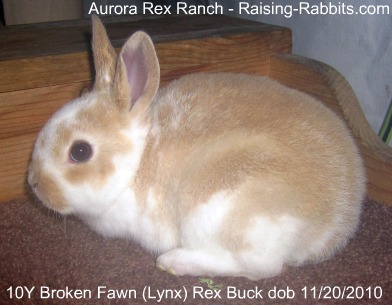
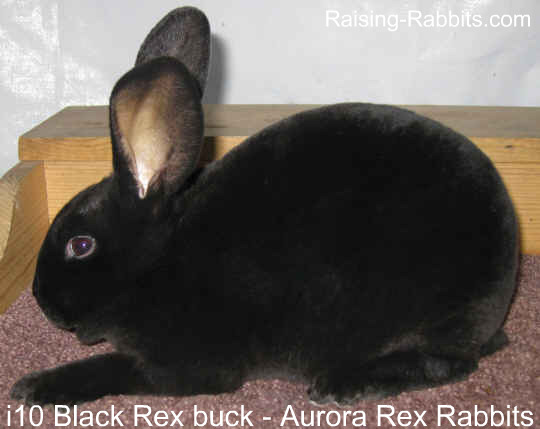
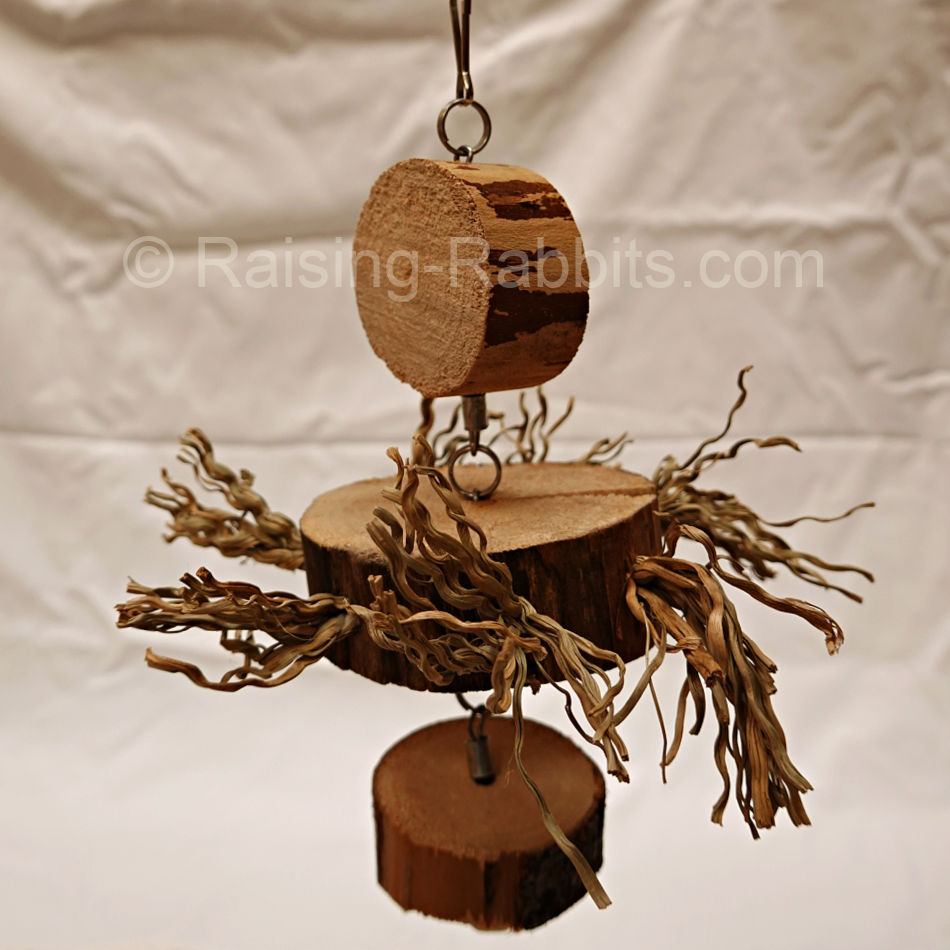
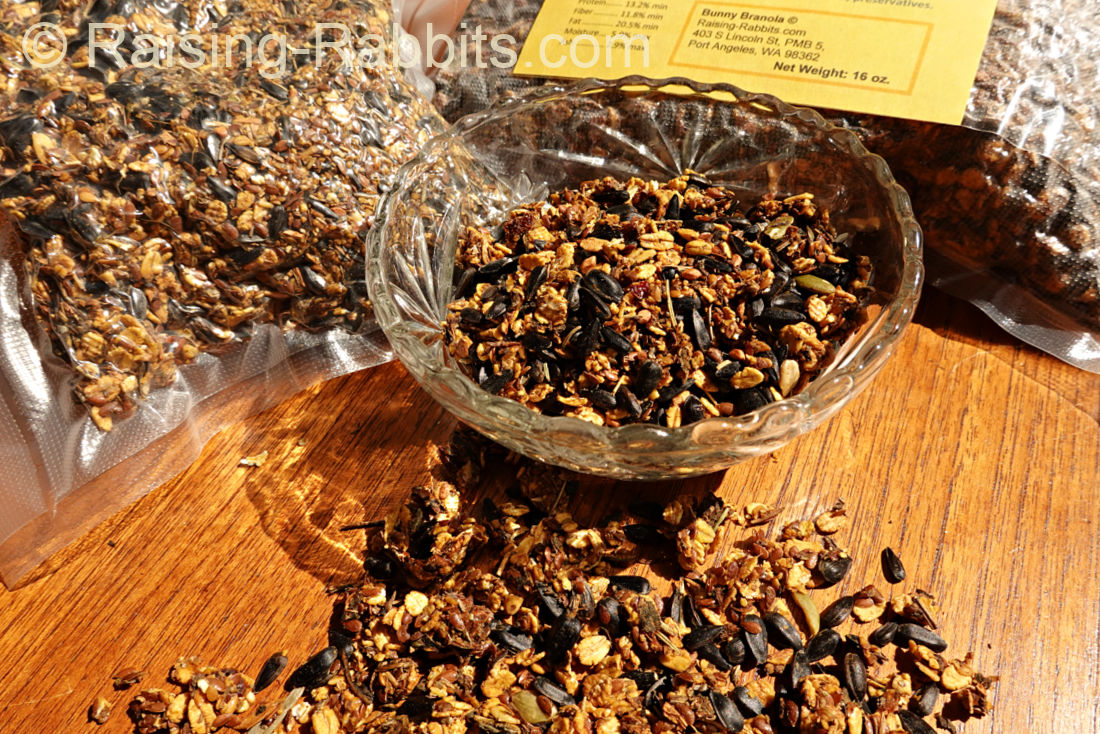
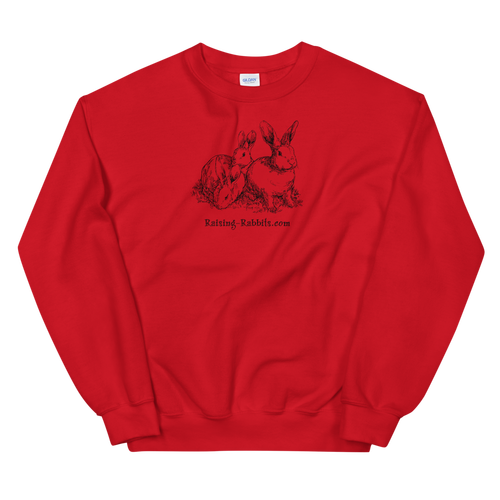
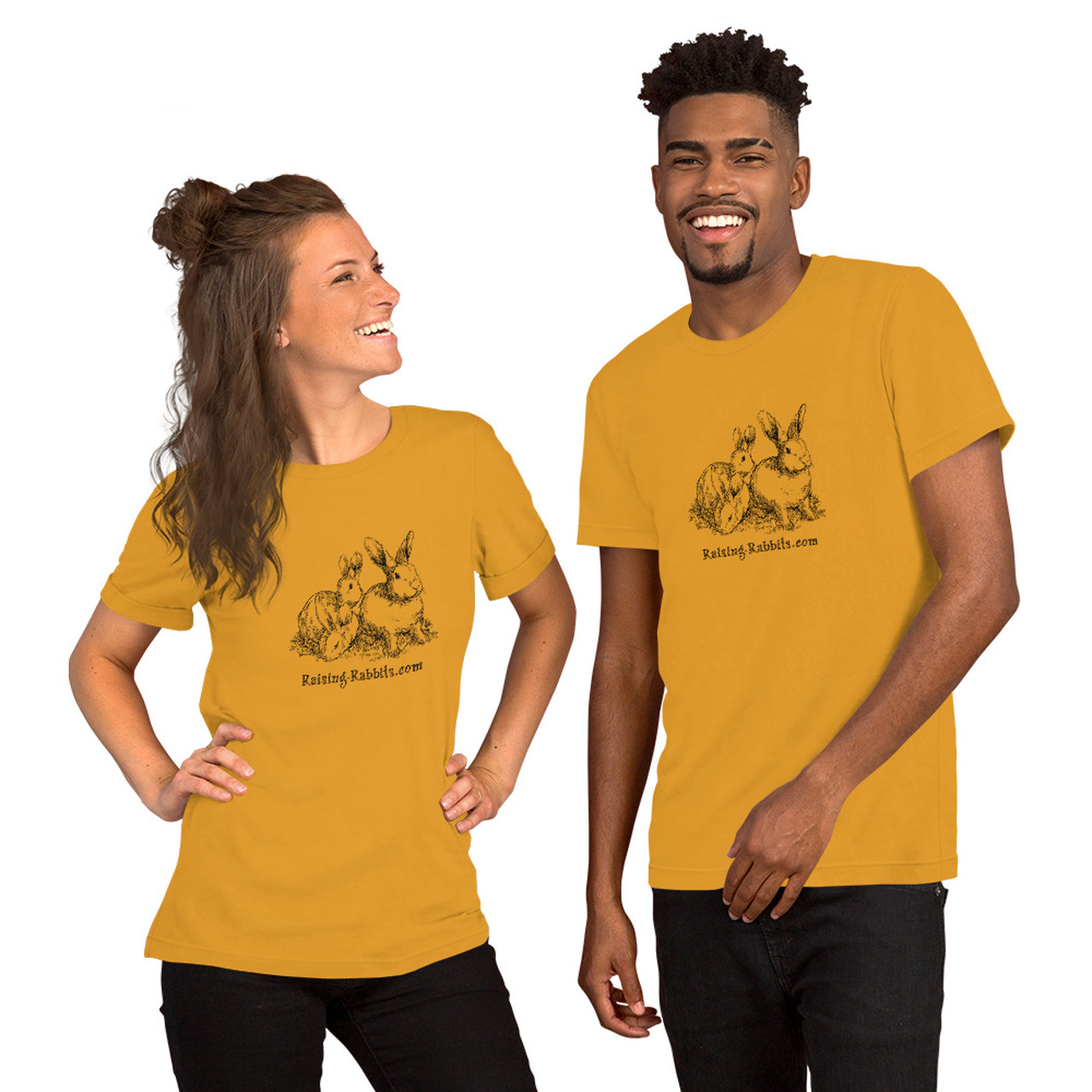
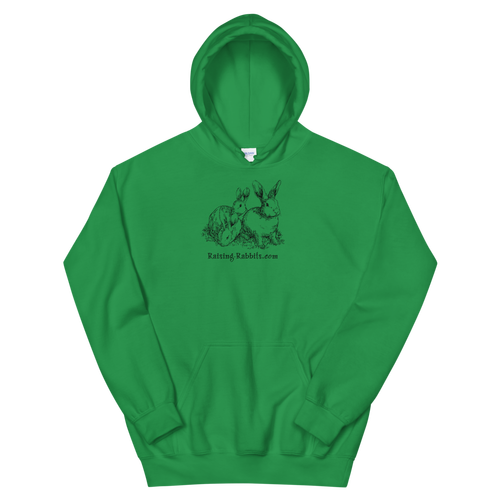



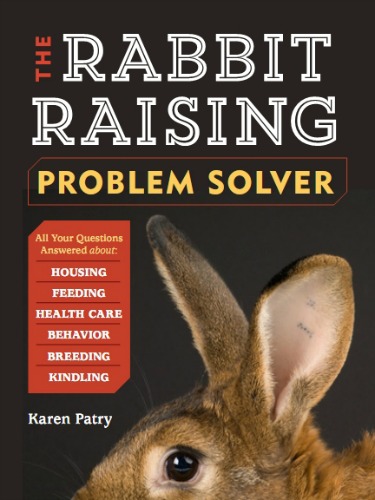

New! Comments
Have your say about what you just read! Leave me a comment in the box below.